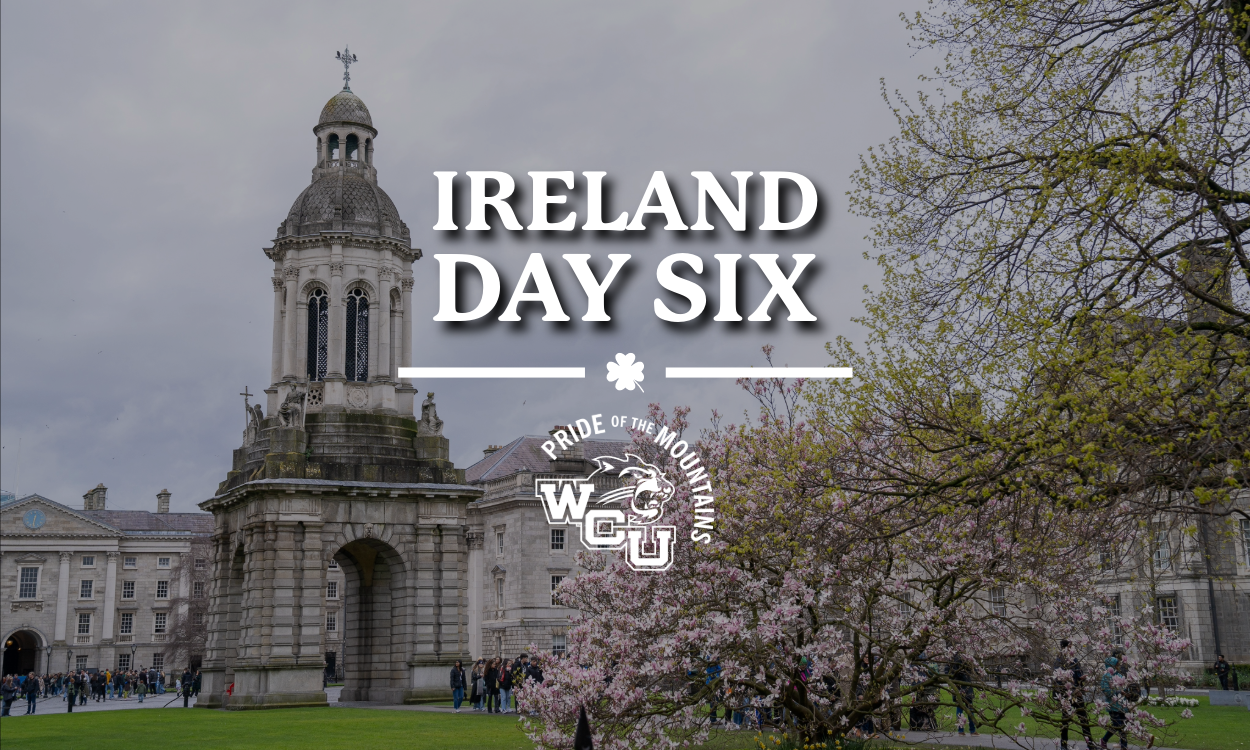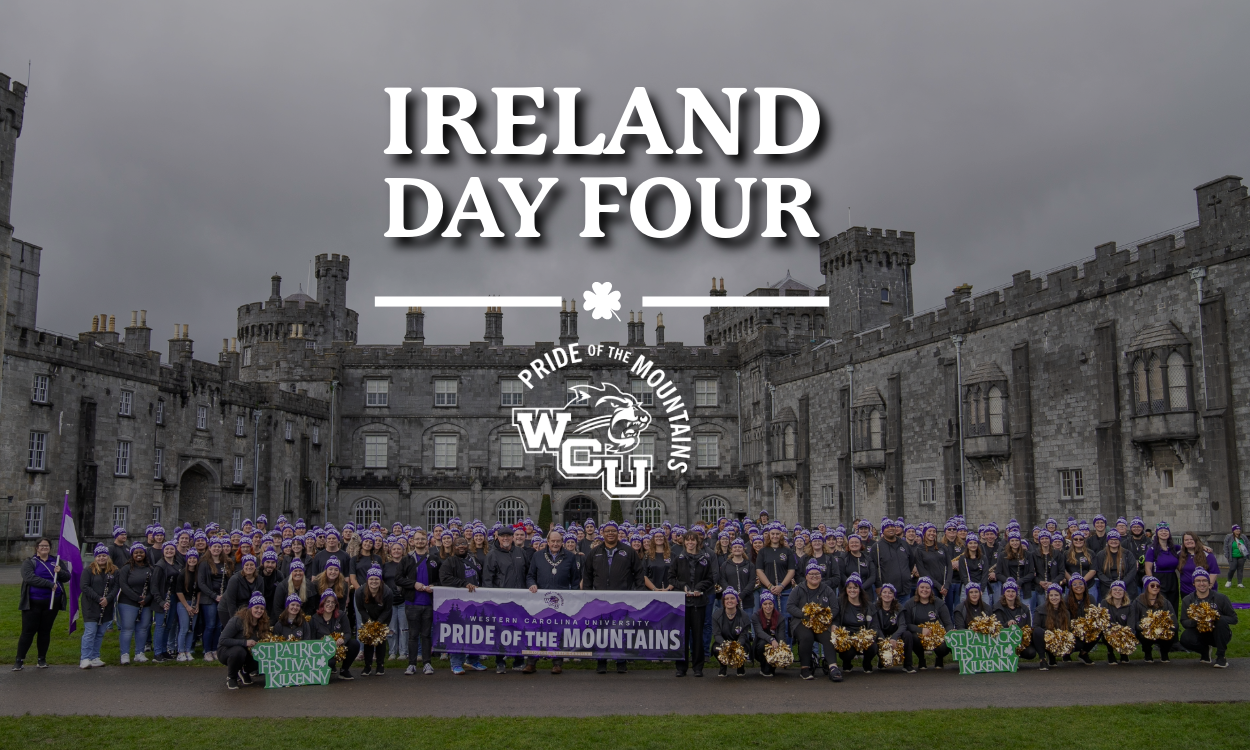Pride of the Mountains to Ireland: Day 3
Pride of the Mountains
to
Ireland
The Pride of the Mountains Marching Band has been selected as one of two U.S bands
to represent the United States at the St. Patrick's Day Parade in Ireland! They will
also have the opportunity to visit many iconic sights during their trip. Follow along
on Pride of the Mountains social media channels!
Instagram Facebook
The Gaelic Games are a long-standing part of Irish culture and integral to the sense of community in Ireland. There are six different games in the family of Gaelic Games. They are Hurling, Gaelic football, Handball, Rounders, Camogie and Ladies Football.
As recently as the 1920s, the games were actually banned by the British Administration in Ireland at the time in an attempt to prevent large gatherings. In protest of this, the Gaelic Athletic Association organized a series of matches on Sunday, August 4th,1918, with an estimated 54,000 members participating. Now known as Gaelic Sunday, this act was an expression of the deep pride citizens felt in their communities. That pride, passion, and sense of community can still be felt today.



Community Through Sports
Students learned about the history and importance of the Gaelic Games before being taught Hurling and Gaelic Football. Hurling is a stick and ball game, played by teams of 15 with a goal zone at each end of the field that looks like the American football goal post and soccer goal combined. The stick that is used is called a ‘hurley’, and the ball is called a ‘sliotar’. The game combines elements from lacrosse, field hockey, and baseball. The objective is to score by sending the ball through or over the goal, each worth a different number of points. Gaelic football is played with a round ball and both hands and feet are used to control and pass the ball. The objectives and scoring are the same as Hurling.






Exploring A Story of Innovation
Guinness got its start on a four-acre brewery site in Dublin. Arthur Guinness was
34 when he signed the 9,000-year Guinness lease on December 31st, 1759 for an annual
rent of £45. Arthur began by brewing ale and, in the 1770s, he began brewing a new
type of English beer – called porter. The company created iconic and recognizable
branding and became known around the world. In 1988, Guinness broke down barriers
in technology by manufacturing a way to put Guinness Draught in a can with the innovative
‘widget’. The widget is a small, white nitrogen filled ball that sits inside the can.
When it is opened, the widget releases bubbles, replicating the draught experience.
Students explored the history of Guinness from humble beginnings into what was, at
one point, the biggest brewery in the world. The Guinness Storehouse takes you on
a journey through the process of making beer, from harvesting barley to fermenting
to packaging, advertising, and transporting it across the world.









